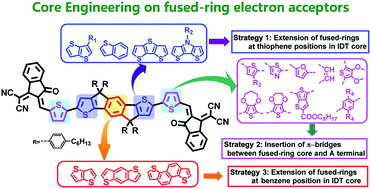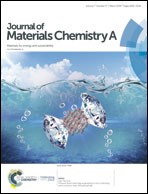Molecular engineering of central fused-ring cores of non-fullerene acceptors for high-efficiency organic solar cells
Abstract
Organic solar cells (OSCs) using bulk-heterojunction (BHJ) blends of polymer donors and non-fullerene acceptors (NFAs) have witnessed significant progress in recent years. NFAs, especially, fused-ring electron acceptors (FREAs) adopting acceptor–donor–acceptor (A–D–A) structures have contributed most high-efficiency OSCs, pushing the power conversion efficiency (PCE) to over 15% and 17% for single-junction and tandem devices, respectively. The vibrant development of novel FREAs is largely attributed to their versatility in manipulating energy levels and molecular ordering via chemical modification. FREAs typically feature coplanar aromatic fused-rings as D cores and two electron-deficient A units as end caps. In this review, we try to summarize the recent advancement in molecular engineering of central fused-ring cores of FREAs for high-efficiency OSCs. The impact of such core engineering on the light absorption, energy levels, electron mobility, and photovoltaic performance of the resultant FREAs is discussed. Some guidelines for future molecular design are suggested from the aspects of improving light absorption, the fill factor, the driving force and voltage loss. Finally, we give an outlook on the remaining challenges and promising directions towards the commercialization of OSCs.

- This article is part of the themed collection: Recent Review Articles


 Please wait while we load your content...
Please wait while we load your content...